
by Imperial Systems | Apr 26, 2018 | Uncategorized
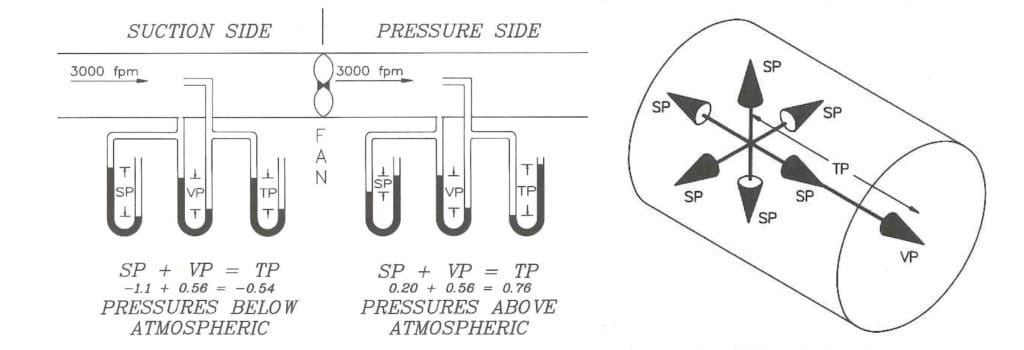
1. What do the different types of pressure measurements mean for airflow in ductwork?
- The basic behavior of airflow: it always travels through the past of least resistance, from higher pressures to lower pressures.
- STATIC PRESSURE: potential pressure exerted in all directions in the ductwork with no airflow, measured with a manometer. It can also be positive (pressure outward on the duct) or negative (pressure pulling inward on the duct)
- VELOCITY PRESSURE: pressure necessary to move air through the ductwork at a certain velocity. Further, this is kinetic energy, and the pressure is in the direction of the airflow.
- TOTAL PRESSURE: a calculation of system static pressure and velocity pressure (the formula is TP=SP+VP). It can be positive or negative. It is the overall energy content of the air stream.

2. When we do our airflow calculations to determine our fan size, what’s the difference between SCFM and ACFM?
- SCFM is Standard Cubic Feet per Minute. This is a measurement based on a standard temperature and air pressure.
- Temperature and air pressure can be significantly different in different areas (e.g. higher altitude, cold or hot climate, high humidity). Then can also vary in different applications (high/low temperature or humidity applications).
- ACFM is Actual Cubic Feet per Minute. This is a measurement of the actual airflow conditions that your system will be operating under.
- Fan manufacturers are able to make these airflow calculations. However, they need to be provided with accurate data about temperature and humidity conditions in your application.

3. What is conveying velocity and why is it important?
- The unit of measurement for conveying velocity is feet per minute (FPM). It is the required velocity to pick up dust in the air stream and move it through the ductwork.
- It is calculated by the CFM at the point of capture and the square foot cross-section of the ductwork.
- This is extremely important because if the conveying velocity drops too low at any point in the dust transport, the dust will drop out of the airflow.
- There are a variety of tables to help engineers calculate the minimum conveying velocity for different kinds of dust.
- Combustible materials might need a higher minimum conveying velocity. This is because an accumulation of this material in the ductwork could cause a deflagration or dust explosion.
Read more
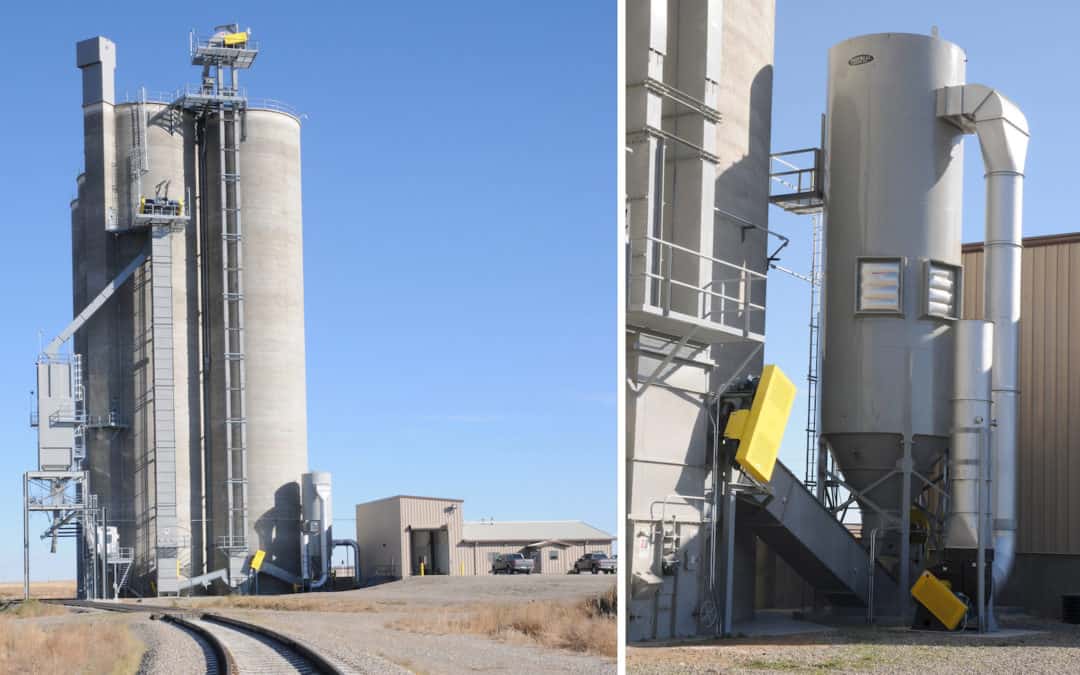
by Imperial Systems | Apr 18, 2018 | Uncategorized
In the agricultural industry, grain dust explosions are a hazard that must be addressed. According to a report from Purdue University, grain dust explosions have occurred at a constant rate over the last ten years, with little change in the number of explosions, injuries, and fatalities. They report an average of 9.3 explosions each year over the past decade.
Since OSHA instituted Standard 29 CFR in 1988, which specifically details safety in grain handling facilities, there has been a focus on the control of what OSHA refers to as “fugitive grain dust”. Preventing grain dust explosions was a focus, including regulations on any type of “hot work” occurring in the vicinity of grain dust. The standard requires testing for combustible dust presence in all storage containers (silos, tanks, bins). It also requires thorough housekeeping procedures to keep dust from accumulating on surfaces.
Grain dust collection systems are strongly recommended, and they must be designed to resist an explosion or deflagration. Correctly designed systems can prevent an explosion from happening or prevent it from causing damage or injury.
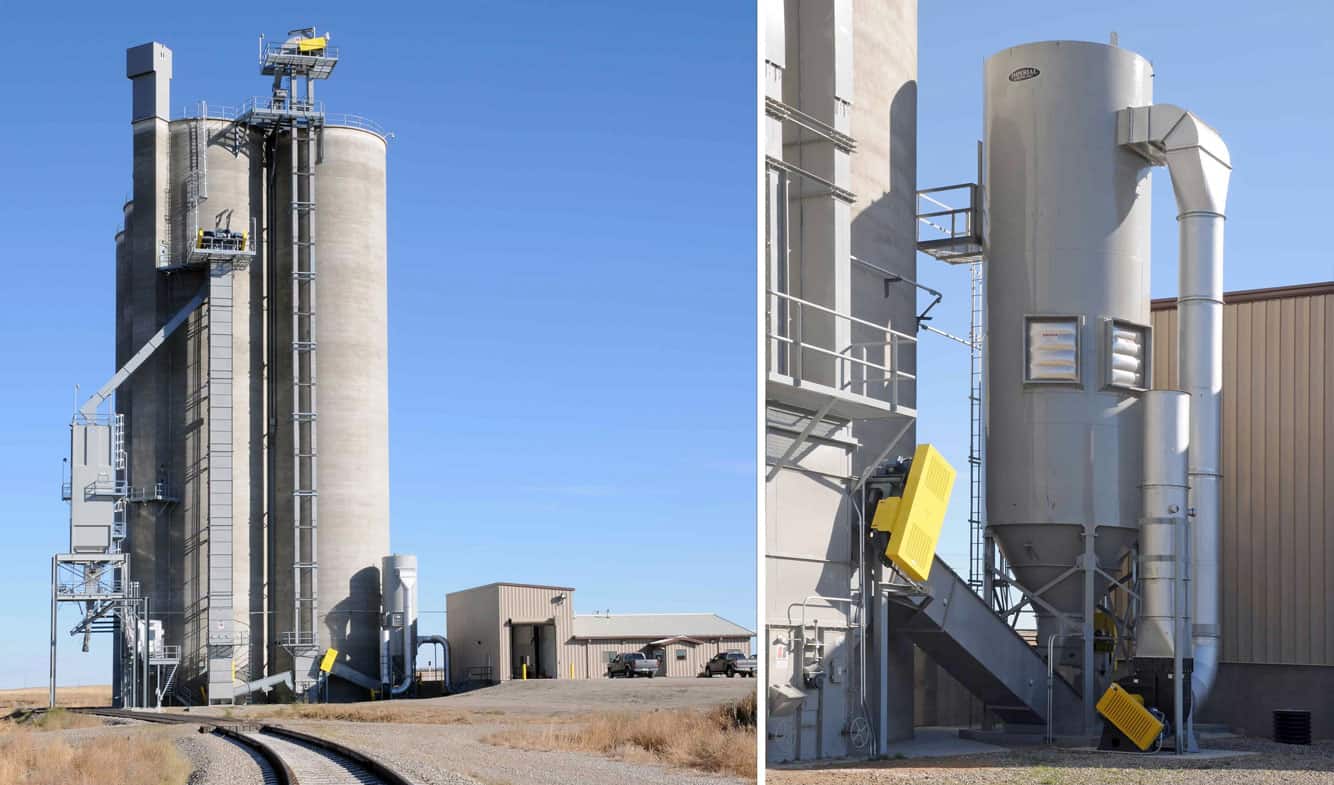
Purdue University’s report examines the number of grain dust explosions that occur each year. From 1995 to 1998 the number of explosions was high, reaching 18 grain dust explosions in 1998. Numbers stayed below the ten-year average until 2005, with 13 explosions, and then in 2008, with 19 explosions.
The most common months for grain dust explosions, according to the report, are April, August, and September. The report suggests that during these months, there is increased handling and moving of grain.
What’s causing these explosions? Some facilities think that they don’t need to worry about a little accumulated dust as long as there’s no ignition source. As our own Charlie Miller would say, “good luck with that”… in 67.8% of incidents, the ignition source was unknown. Only 6% could be related to fire, with less than 4% related to sparks or mechanical failures. Most of the time, nobody knows what triggered the explosion, which makes it very difficult to prevent an explosion when fugitive dust is present.
The high percentage of unknown ignition sources should be proof that the only prevention for grain dust explosion is to keep fugitive grain dust under control in all parts of the facility at all times. A dust collection system is essential to this, and can include a baghouse, a cartridge collector, or spot filters located at specific grain handling points.
Some other interesting statistics related to combustible dust explosions in the grain industry:
From 2007 to 2016, there were 91 dust explosions, and 52 of those were caused by corn dust. The second most hazardous type was mixed feed, which probably includes corn quite often, with 19 explosions. 20 explosions out of 91 were caused by other types of dust.
In 2017, there were 7 grain dust explosions, slightly below the ten-year average of 9. The locations included a pet food plant, a grain mill, and 5 grain elevators. Grain elevators move large quantities of grain and create a high risk of explosion.
In the last ten years, there have been 101 injuries and 15 fatalities due to grain dust explosions. 55 of the explosions occurred in grain elevators, with feed mills a distant second at 18.
If grain elevators are so hazardous, how can the risk be decreased? Spot filters are often a very good solution for dust control on these facilities. They can be placed almost anywhere that dust is generated and are self-cleaning, requiring only occasional maintenance. They do not require confined space permits to work in and can control fugitive grain at the source.
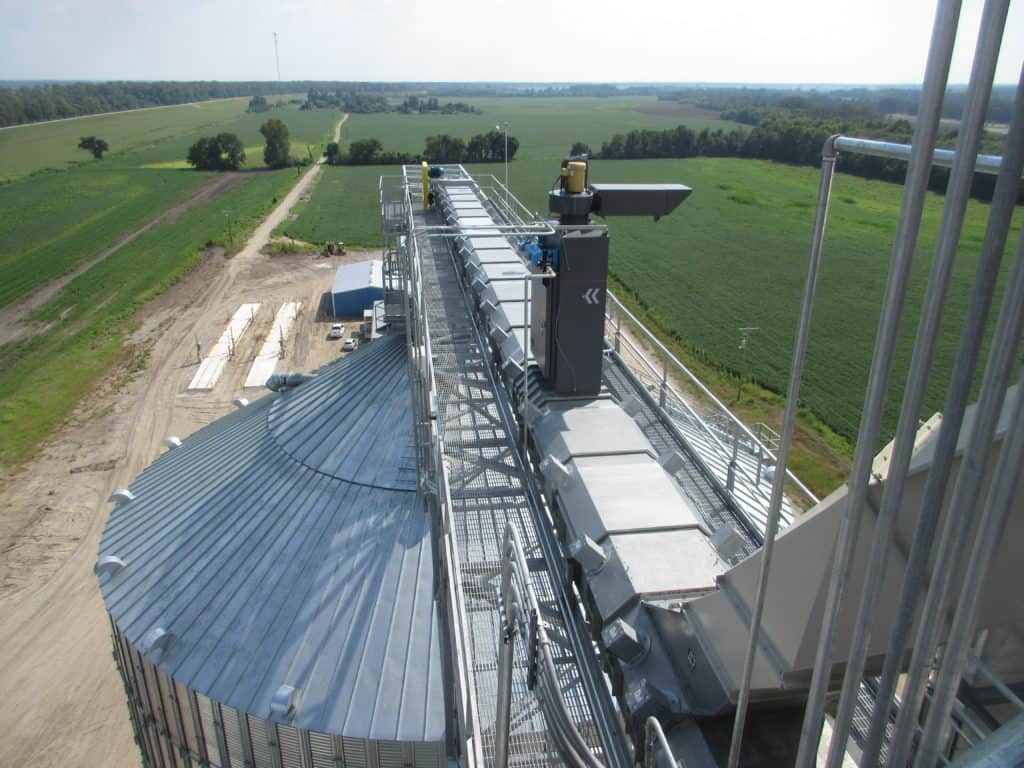
https://engineering.purdue.edu/FFP/research/dust-explosions/Grain_Dust_Explosions_2017.pdf
https://www.osha.gov/pls/oshaweb/owadisp.show_document?p_table=STANDARDS&p_id=9874
http://www.grainnet.com/article/140120/purdue-university-annual-report-shows-seven-reported-grain-dust-explosions-nationwide-in-2017
https://engineering.purdue.edu/FFP/research/dust-explosions
Read more
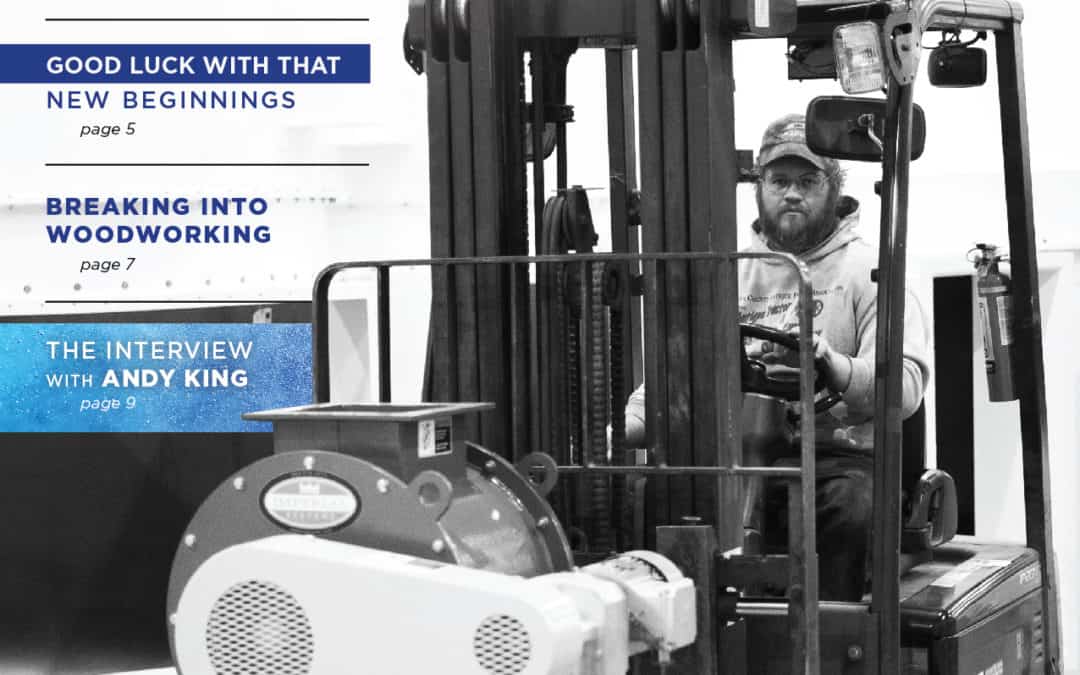
by Imperial Systems | Apr 11, 2018 | Uncategorized
Imperial Systems Newsletter Issue 5 is the first issue of the year. Make sure to check out all of the articles and interview. If you would like a Printed Hard Copy of this issue of our newsletter please contact your Imperial Sales Rep.
Click Cover To Download and Print Newsletter
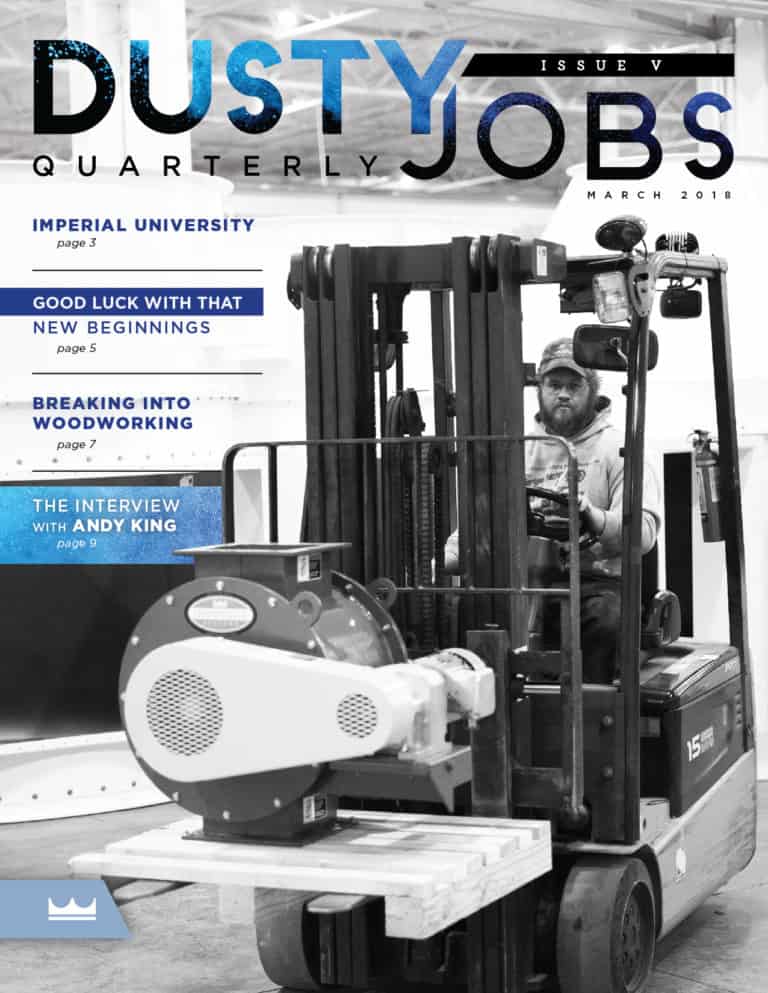
CLICK THE ARTICLE TO READ



 Imperial Systems has been a family business from the very beginning. Over time, though, our family has grown a lot. We have new employees as well as reps from all across the country who’ve joined our family because they believe in us and our products. Our National Sales Meeting in March showed us just how much our family has grown, and it gave everyone a chance to learn more about our products, while taking a peek behind the curtain to see what we do here and how everything works.
Imperial Systems has been a family business from the very beginning. Over time, though, our family has grown a lot. We have new employees as well as reps from all across the country who’ve joined our family because they believe in us and our products. Our National Sales Meeting in March showed us just how much our family has grown, and it gave everyone a chance to learn more about our products, while taking a peek behind the curtain to see what we do here and how everything works.
In this issue, you’ll meet some of our new extended family of reps from all over the country, but you’ll also meet Andy, who has been with the company almost since it began and is a long-time member of our close-knit family. As the Sales Manager, a major part of my job is helping our company grow, and it’s been really exciting to have all of these new reps and OEM’s sign on to represent Imperial Systems. Many of them left our competitors and came to work with us, not just because of the quality of our product, but because of who we are.
I’d like to invite anyone who is interested to visit us and see our new facility, get a look at all the great work getting done here, and meet some of the amazing people that make up our Imperial Systems’ family.
Read more

by Greg | Apr 11, 2018 | Hidden from Archive
Q: You’ve been here at Imperial Systems pretty much since the beginning, right?
A: I started when we were still over in Grove City. Me, Russ, and Steve are the three still left from that original crew. I’ve been here twelve years. I started off doing welding and then did fabrication, and did a little bit of everything. In the past year I’ve been doing a lot of field work and traveling.
Q: How has the company grown since you started?
A: It’s grown like crazy. When I was in Grove City and we were moving to the Jackson Center place, I’d work ten-hour days all week and then go with Russ to Jackson Center and work on the new place. And it didn’t take long before we started to outgrow that.
Q: What do you think about the new building?
A: It was totally necessary for us to be able to grow. We’re already just about full. Since we moved in back in January things are starting to get settled in and they’re running a lot smoother.
Q: How much more do you see us growing?
A: The way things are growing I could see us outgrowing this building someday. We keep getting more and more orders for equipment.
Q: What are your favorite things to do here, since you do some of everything?
A: I like running the plasma table, and I like doing fitting and welding. I run the forklift, and now I do a lot of field work so I’m off traveling around a lot. You get to see some interesting things out there.
Q: What would you tell people about working here?
A: We have a lot of fun working here. Maybe a little too much sometimes. It’s a really good bunch of guys.
Q: And you’re still happy working here after twelve years?
A: Absolutely. It hasn’t been perfectly smooth sailing for the entire twelve years and we’ve had our ups and downs, but it’s a great place to work.

Q: And when you’re not here, you’re at your farm.
A: That’s right. My dad’s the third generation and I’m the fourth generation on that farm. I’ve worked there since I was a kid. We didn’t have sitters… we just went to the farm. If I’m not at work, that’s where I am.
Q: And you’ve got a lot going on there right now with all the baby goats, right?
A: We had triplets the other day. We’re bottle feeding one of them. We had eleven babies out of the five goats I bought on my last trip.
Q: What are you going to do with all these goats?
A: They’re meat goats, Boer goats. They originated in Africa. They can get up to 200 pounds. There’s a big demand for goat meat in some places.
Q: How many goats do you plan on having?
A: My dad and I are still talking about that one. A lot, I know that. My oldest kid, my nine-year-old, is starting 4H this year. He’s got two goats. The younger ones will start here pretty soon.
Q: So you’ve got ducks, chickens, horses, cows, goats, pigs…
A: And my dog, Molly. She’s a chocolate lab. She’s my farm dog. She minds me and no one else, and I love it.
Q: And you’ve got your tractors.
A: I’m into the Mercer County Antique Power Association, antique farm equipment, antique tractor pulls. I have a tattoo of my first tractor. Took a picture of it and took it in to them.
Q: So you’re passing on the farming tradition to the fifth generation?
A: Of course I am!
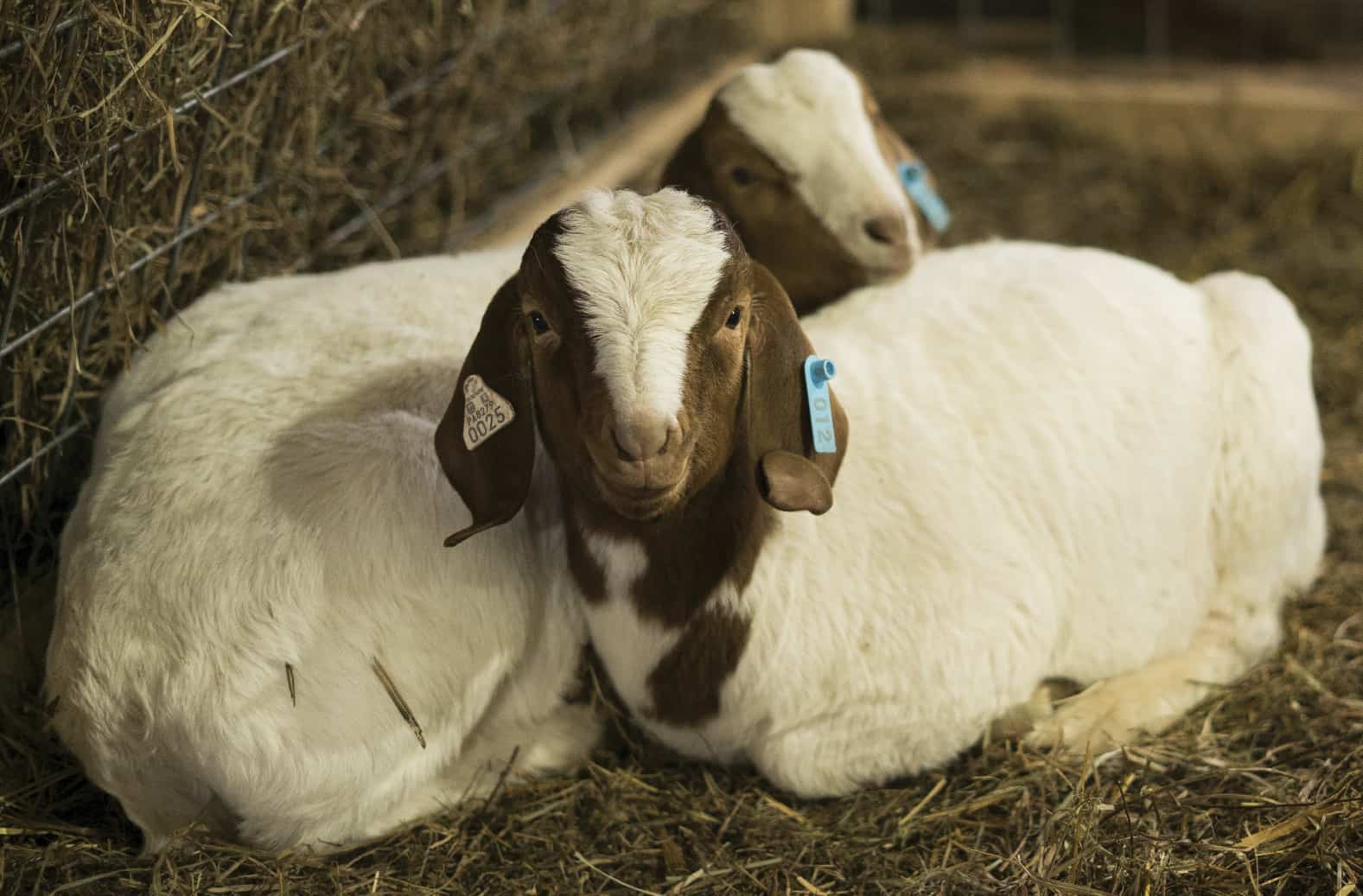
Read more
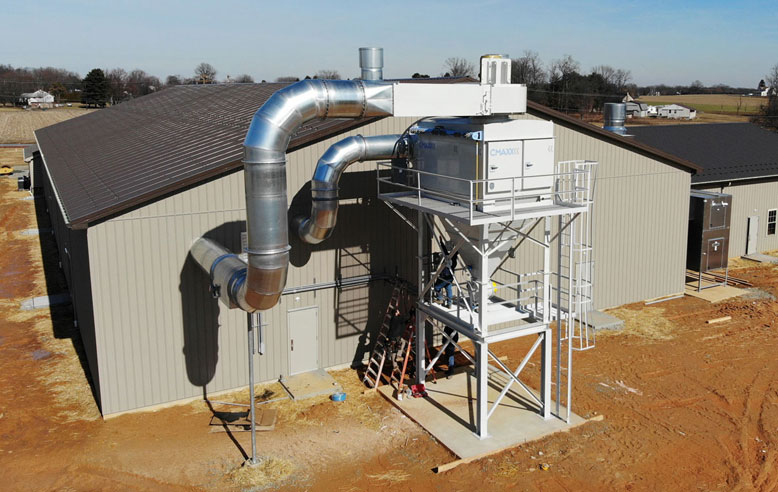
by Scott Stearns | Apr 11, 2018 | Woodworking
In Lancaster, in the heart of the Pennsylvania Amish and Mennonite communities, woodworking is a major industry. Traditionally, the wood shop dust collector system of choice for these furniture and cabinet makers has been the baghouse. However, the CMAXX cartridge dust and fume collector can work just as well as a baghouse on many of these applications. We recently had an opportunity to work with one of our reps, Isaac Lapp from Lapp Millwright, to introduce the CMAXX to a cabinet maker to handle their wood dust. Fortunately, Isaac Lapp and our own Charlie Miller were able to work with this customer to help him design the system he needed.
“Our competitors were in there at the time telling them that a cartridge collector absolutely would not work,” Isaac says. “Charlie was able to show them that it would work, and now it’s there and working great.”
A CMAXX system can be the perfect solution for certain wood dust applications. The efforts of Charlie and Isaac convinced the customer to take the risk of trying a cartridge collector, and now they are very pleased that they did.
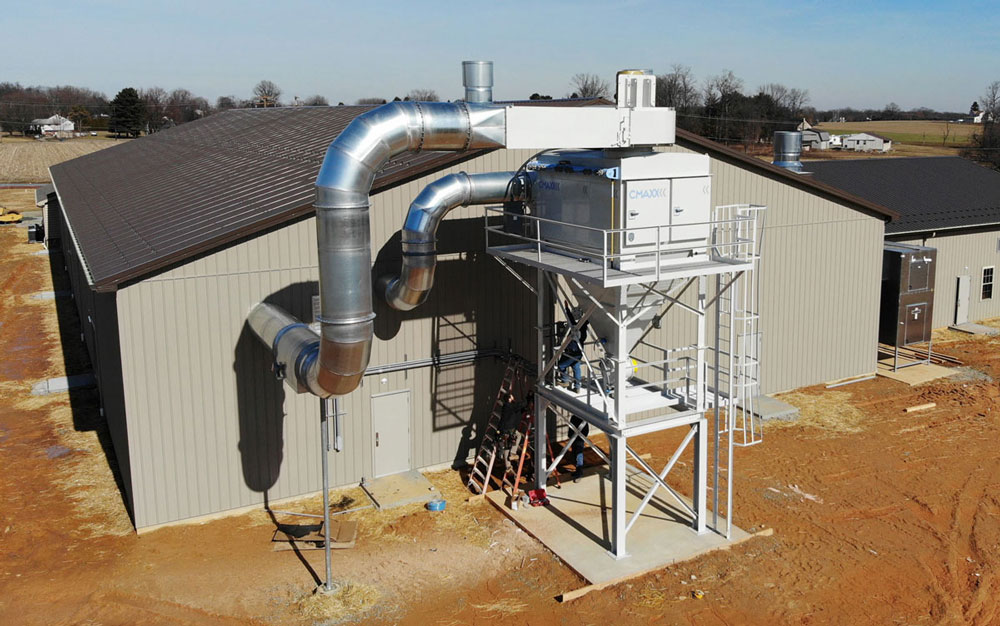
Part of putting the customer at ease about this decision was Charlie’s commitment to walking them through the process from the very early design phases to the end product. In this application, where the capture points are on saws, sanders, and routers, the wood dust is generally very fine. The customer has noted that the system has given them strong airflow on all of the capture points and maintained that airflow, meaning the cartridges are functioning exactly as they should.
For this customer, one of the strongest selling points for the cartridge collector over a baghouse was the size of the collector. A traditional round baghouse would have been nearly 60 feet high to suit the needs of this customer. The CMAXX footprint is very neat and efficient compared to a towering BRF.

This customer needed the wood shop dust collector to be set up so that trucks could drive underneath it. The extra height added by a baghouse would have been excessive. Despite the initial uncertainty about a cartridge collector, it was an option that kept the collector profile much smaller than a baghouse.
Since this customer has seen great success with the CMAXX collector, other customers are making the leap and putting our cartridge collectors on their wood applications. With a “foot in the door” with a cartridge collector at a brand new wood dust facility, others have been willing to take another look.
When one customer sees success with a product, others are more likely to follow, and Isaac reports that he’s getting a much better reception now when suggesting a CMAXX for applications.
Baghouses and cartridge collectors can both work well for woodworking dust collection, but many people are resistant to the idea of cartridge collectors working for wood. The truth is that for many wood shop dust collector applications, a cartridge collector works just as well, and it offers the option of a much smaller footprint, easier maintenance, and excellent efficiency.
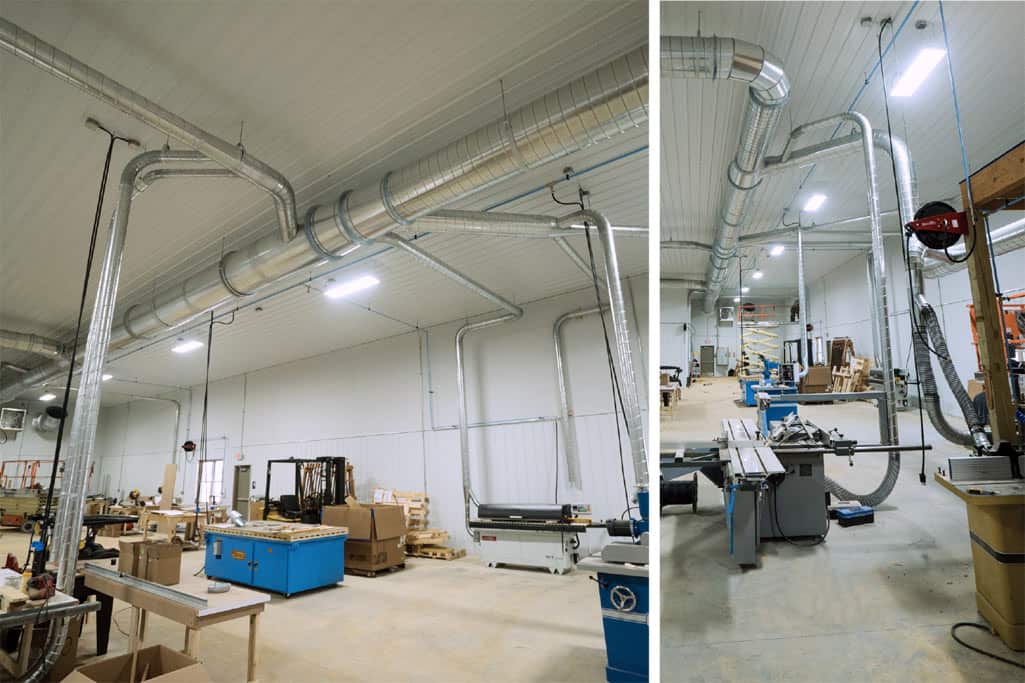
Read more in our blog post: Selecting an Industrial Dust Collector for Woodworking?
Read more



















